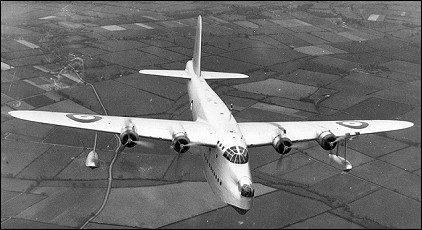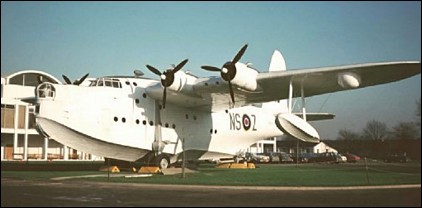 |
Short S.25 Sunderland1937 |  |
| FLYING BOAT | Virtual Aircraft Museum / United Kingdom / Short |
 |
The Sunderland maritime-patrol and reconnaissance flying-boat was designed to meet the requirements of Air Ministry Specification R.2/33 and was virtually a military version of the Empire boat. The prototype flew for the first time in October 1937, just over a year after the first Empire began its trials. By the outbreak of war there were three squadrons of RAF Coastal Command operational with it and others in the process of re-equipping or forming. The Sunderland was notable for being the first flying-boat to be equipped with power-operated gun turrets. The first production version was the Sunderland I powered by Bristol Pegasus 22 engines and armed with eight 7.7mm machine-guns: two in a Fraser-Nash nose turret, four in a Fraser-Nash tail turret, and two on hand-operated mountings in the upper part of the hull aft of the wing trailing edge. The Sunderland II had Pegasus XVIII engines, but was otherwise similar to the Mk I, although late models were fitted with a two-gun dorsal turret in place of the manually operated guns. The Mk III used the same power plant as the Mk II, but had a modified hull with a stream-lined front step and a dorsal turret as standard. The final military version was the Sunderland V, the IV having become the Seaford. Power for the Mk V was provided by 894kW Pratt & Whitney R-1830-90Â Twin Wasp engines. Armament comprised four fixed 7.7mm machine-guns in the nose, two similar beam guns and four in the tail turret. In 1943 a number of Sunderlands were de-militarised, equipped to carry 20 passengers and turned over to BOAC.
|  COMPANY PROFILE | ||||||||||||||||||||||||||||||||||||||||||||||||||||||
 |

|

